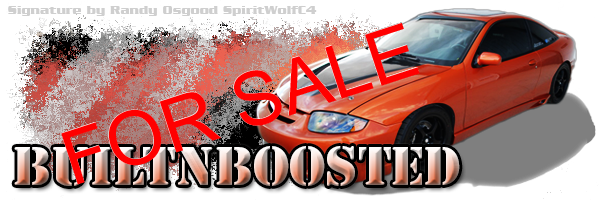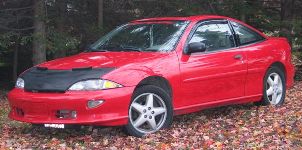the spec for fluid capacity is - 8.2 liters / 8.6 quarts / 2.16621082 gallons
ENGINE COOLANT
The cooling system in your vehicle is filled with DEX-COOL engine coolant. This coolant is designed to remain in your vehicle for 5 years or 150,000 miles (240 000 km), whichever occurs first, if you add only DEX-COOL extended life coolant.
A 50/50 mixture of clean, drinkable water and DEX-COOL coolant will:
* Give freezing protection down to -34°F (-37°C).
* Give boiling protection up to 265°F (129°C).
* Protect against rust and corrosion.
* Help keep the proper engine temperature.
* Let the warning lights and gages work as they should.
NOTICE: Using coolant other than DEX-COOL may cause premature engine, heater core or radiator corrosion. In addition, the engine coolant may require changing sooner, at 30,000 miles (50 000 km) or 24 months, whichever occurs first. Any repairs would not be covered by your warranty. Always use DEX-COOL (silicate-free) coolant in your vehicle.
WHAT TO USE
Use a mixture of one-half clean, drinkable water and one-half DEX-COOL coolant which won't damage aluminum parts. If you use this coolant mixture, you don't need to add anything else.
CAUTION: Adding only plain water to your cooling system can be dangerous. Plain water, or some other liquid such as alcohol, can boil before the proper coolant mixture will. Your vehicle's coolant warning system is set for the proper coolant mixture. With plain water or the wrong mixture, your engine could get too hot but you would not get the overheat warning. Your engine could catch fire and you or others could be burned. Use a 50/50 mixture of clean, drinkable water and DEX-COOL coolant.
NOTICE: If you use an improper coolant mixture, your engine could overheat and be badly damaged. The repair cost would not be covered by your warranty. Too much water in the mixture can freeze and crack the engine, radiator, heater core and other parts.
If you have to add coolant more than four times a year, check your cooling system.
NOTICE: If you use the proper coolant, you do not have to add extra inhibitors or additives which claim to improve the system. These can be harmful.
Draining Procedure
Caution: With a pressurized cooling system, the coolant temperature in the radiator can be considerably higher than the boiling point of the solution at atmospheric pressure. Removal of the surge tank cap, while the cooling system is hot and under high pressure, causes the solution to boil instantaneously with explosive force. This will cause the solution to spew out over the engine, the fenders, and the person removing the cap. Serious bodily injury may result.
1. Remove the coolant pressure cap.
2. Raise and support the vehicle. Refer to Vehicle Lifting.
3. Place a drain pan under the drain cock.
4. Open the radiator drain cock.
5. Drain the cooling system.
6. If a complete engine block drain is required, remove the engine block drain plug.
7. Inspect the engine coolant for the following:
o Discolored-follow the flush procedure.
o Normal in appearance-follow the filling procedure.
o If a complete block drain is required, remove the water pump drain plug.
Filling Procedure
Notice: The procedure below must be followed. Improper coolant level could result in a low or high coolant level condition, causing engine damage.
Notice: Refer to Fastener Notice in Service Precautions.
1. Close the radiator drain cock.
o Tighten radiator drain cock to 2 Nm (18 inch lbs.) .
2. Install the water pump drain plug if necessary.
o Tighten the water pump drain plug to 22 Nm (16 ft. lbs.) .
3. Lower the vehicle.
4. Fill the cooling system.
5. Slowly add a mixture of 50/50 DEX-COOL and clean, drinkable water. Important: It is necessary to maintain the coolant level at the top of the surge tank label to insure all the air has been purged from the cooling system.
6. Install surge tank cap.
7. Start the engine.
8. Run the engine at 2,000-2,500 RPM until engine reaches normal operating temperature.
9. Allow the engine to idle for 3 minutes.
10. Shut the engine off.
11. Allow the engine to cool.
12. Top off the coolant as necessary.
13. Inspect the cooling system for leaks.
14. Rinse away any excess coolant from the engine and the engine compartment.










